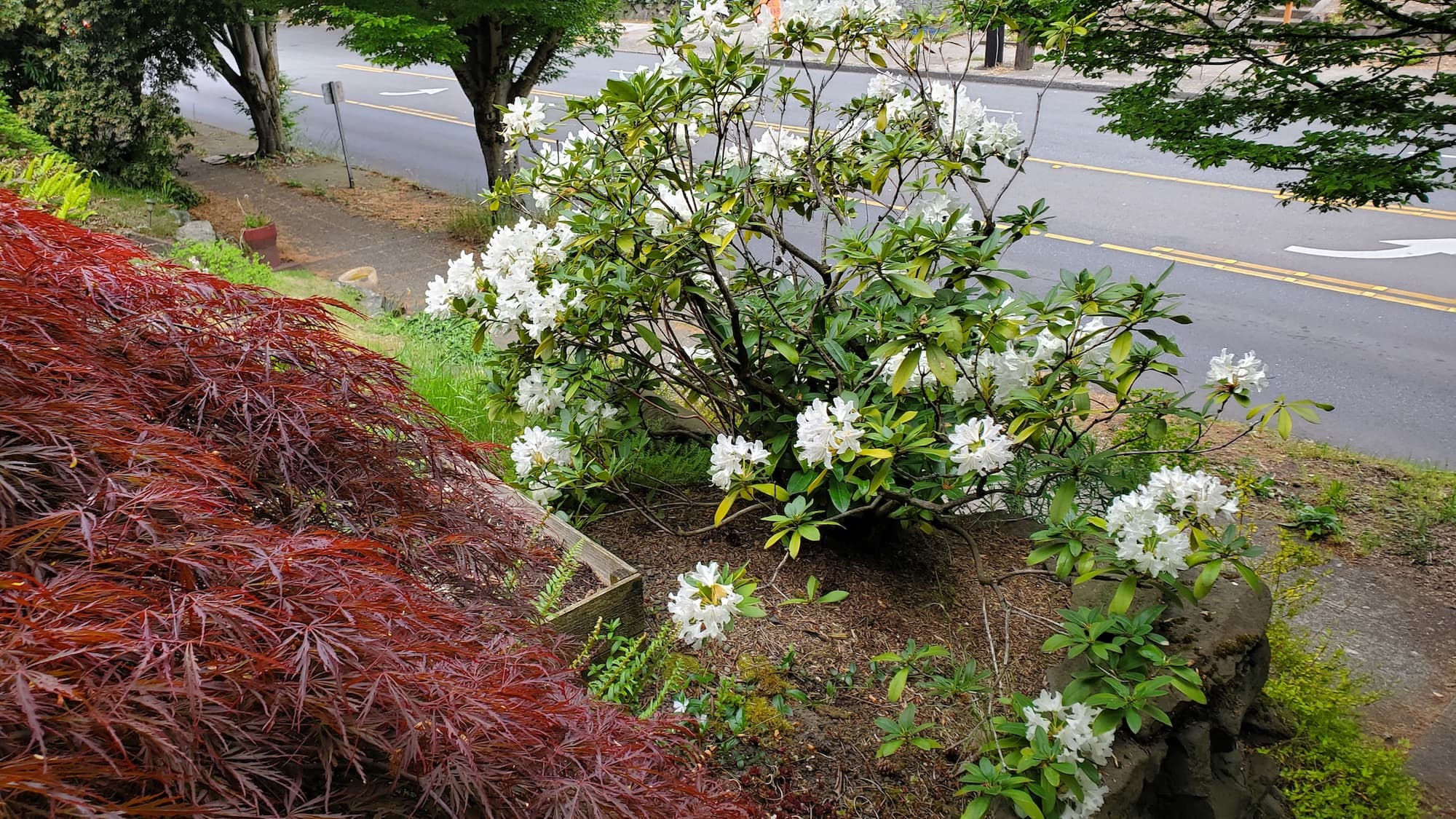West Seattle Clover removal service
Homeowner’s Issue
Clover shows up fast in West Seattle yards because our soils are often compacted, slightly acidic, and low on nitrogen—conditions clover tolerates better than many lawn grasses. Heavy winter rains from October through March compact topsoil, and our cool, shady spots under cedars and maples (common around Admiral and Fauntleroy) favor moss and clover over turf. Lawns on south- and west-facing slopes like those in Alaska Junction and Roxhill get uneven sun, so bare patches seed in and clover fills the gaps.
Drainage is a real issue on the hillier blocks above Alki; poor runoff and soggy depressions create recurring problem zones. Conversely, exposed spots near Alki Beach can suffer salt spray stress and thin turf, again inviting clover. HOA and curb-appeal expectations around Lincoln Park and the Admiral District push homeowners to want tidy, green lawns—yet overusing chemical fixes isn’t allowed or desirable. Sustainable, mechanical fixes work best here: aeration to relieve compaction, organic amendments to lift fertility, and overseeding with shade-tolerant fescues for long-term suppression. Expect a multi-step approach timed to our rainy season for best results rather than a one-off quick fix.
Our Quality Service
We remove clover without herbicides—hand-pulling, rotary dethatching, coring aeration, and targeted overseeding with cool-season blends. We topdress with screened compost and apply organic fertilizer to boost turf competition. For severe patches we use solarization or sheet-mulching on small beds and install mulch or landscape fabric where turf isn’t desired.
Tools and methods: hand tools, manual weed removal, mechanical aerator, seed spreader, compost blower, and mulching equipment. Typical timeline: one on-site visit (2–4 hours) for assessment and initial removal, then follow-ups at 4 and 8 weeks for seeding and touch-ups. We time work to late summer or early fall for overseeding and early spring for spot treatments to match West Seattle’s rainfall and growing windows. Benefits: safe for kids and pets, improved curb appeal, reduced long-term maintenance, and more resilient turf.
What’s Included
- Full site assessment and clover mapping
- Manual hand-pulling of clover in beds and lawns
- Dethatching and coring aeration where needed
- Overseeding with appropriate cool-season seed
- Topdressing with screened compost and organic amendments
- Cleanup and haul-away of debris (or green bin drop-off)
Options / Upgrades:
- Mulch + landscape fabric in non-turf areas
- Organic soil test and tailored compost blend
- Haul-away vs. green bin disposal
- Solarization (clear plastic) for small, intense patches
- Seasonal follow-up visits (recommended)
Before & After / Expectations
Expect some visible disruption: soil upturn, torn turf in places, and a few days of uneven appearance after dethatching and aeration. Seeding needs 2–6 weeks to show green cover and several months to fully thicken—plan for at least one seasonal follow-up. We remove green waste and can haul to the landfill or sort for Seattle Public Utilities green yard waste.
Care tips for West Seattle: water deeply in the mornings during dry spells, reduce frequency in rainy months, and avoid heavy foot traffic on new seed for 3–4 weeks. Watch for moss and English ivy on shaded slopes near Lincoln Park—those need separate steady control via mechanical removal and mulching. Fertility: low, steady organic feeding beats a single strong chemical dose in our climate.
FAQs
How long until clover is gone?
Sustainable methods take longer than chemicals. You’ll see reduction in 4–8 weeks and stable results by the next growing season with follow-ups.Do you use herbicides?
No. We use only mechanical removal, aeration, compost, and organic amendments—no herbicides.Will this damage my lawn?
There’s short-term disturbance from aeration and dethatching, but these practices strengthen turf long-term.Do you handle steep/sloped yards?
Yes. We use hand methods and appropriate erosion-control mulches for slopes common in West Seattle.How often should I schedule maintenance?
A fall overseed and a spring tune-up are typical; high-visibility yards may benefit from bi-monthly follow-ups.
Call to Action
If you live in West Seattle and want a sustainable solution that lasts, book a free estimate. We schedule quickly, work with local conditions near Alki and Lincoln Park, and prefer methods that reduce repeat problems. Trusted local crew, on-time, and detail-driven.
Email: neatandtidyseattle@gmail.com
Phone: 206-538-9344
Licensed • Bonded • Insured










